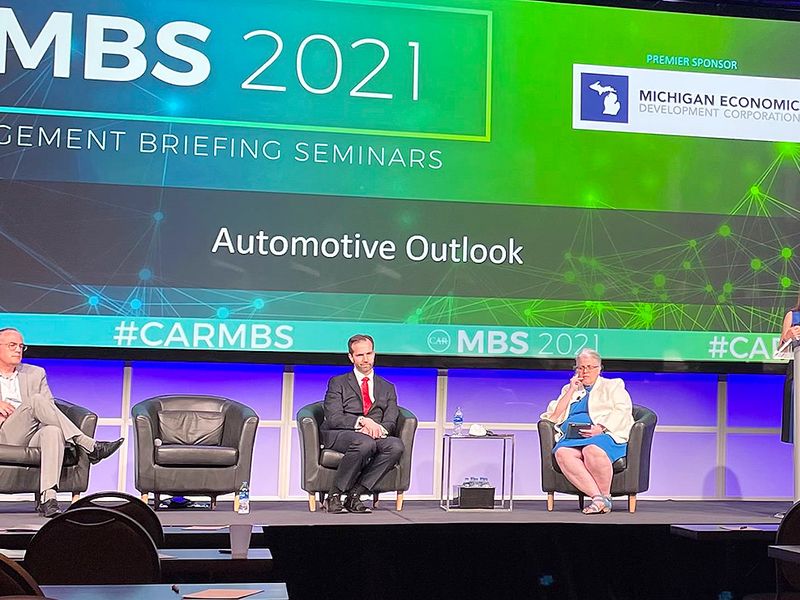
TRAVERSE CITY, Mich. — U.S. electric vehicle sales will continue to grow, but automakers won’t meet an ambitious new federal goal aimed at helping address climate change and countering China’s rapid rise as a leading EV and battery hub, according to forecasters.
The Biden administration on Thursday set a nonbinding sales target: Battery-electric or plug-in hybrids will account for half of all new light vehicles sold in 2030, a goal supported by major U.S. and foreign automakers as well as the UAW.
LMC Automotive expects about 24 percent of sales will be EVs by 2030, while IHS Markit estimates 32 percent, and Wells Fargo forecasts 16 percent. IHS says when combined with plug-in hybrids, the tally rises to 38 percent, while LMC says the combined total will be about 30 percent, both still well short of the 50 percent mark.
“You have to get consumers on board,” Stephanie Brinley, principal analyst of the Americas at IHS Markit, said on a panel Thursday at the Management Briefing Seminars here. “That’s still a big wild card. It can be done, but it could be more difficult than expected.”
Charging infrastructure remains one of the biggest obstacles to EV adoption, the panelists said.
“If you can’t go from point A to point B without having some kind of anxiety — not just range anxiety — but if you can’t charge at a station because it didn’t work or you had to wait two hours,” the industry won’t meet President Joe Biden’s goal, said Jeff Schuster, president of global forecasting at LMC Automotive. “If you can get the charging times down and you can count on it, you get the mass consumer over to the space.”
Colin Langan, an automotive and mobility analyst at Wells Fargo, notes that most people charge at home, but that’s not an option for some in densely populated urban environments.
Proposed legislation could help. A bipartisan Senate infrastructure bill includes $7.5 billion for EV charging stations, helping expand the roughly 40,000 chargers available today.
The lack of profits has long discouraged automakers from introducing EV models, and that still remains a challenge, Langan said. He noted recent spikes in raw materials costs that have pushed up the price of battery cells, even as overall battery costs have fallen in recent years.
“Right now we can sell them,” Langan said. “But automakers will lose tons of money.”

